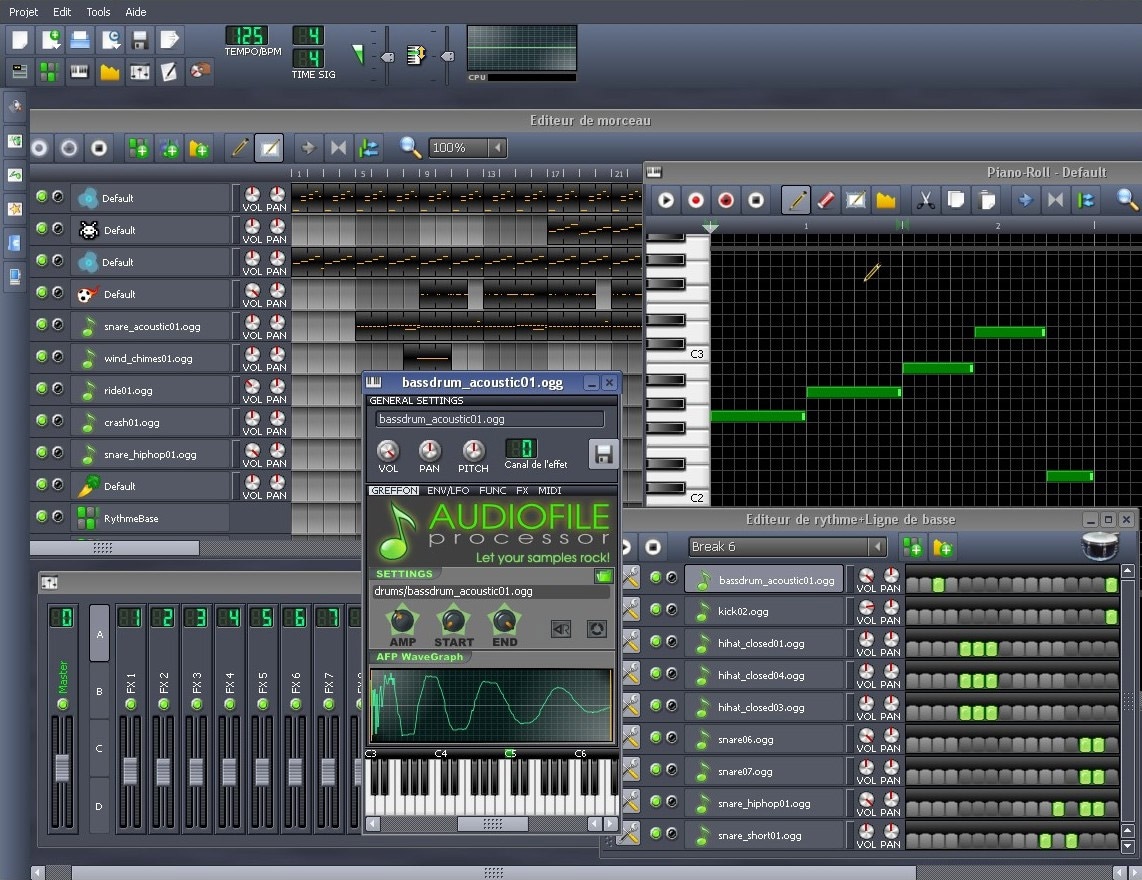Once you have downloaded your VST (.dll file), you will need to move the .dll file (for example, Gsnap.dll) into your Audacity VST plugins folder.
The Audacity website can provide some helpful information on using the software and incorporating plugins. The extra benefits of using this software (and the right plugins) will elevate your projects. Because of licensing restrictions, Audacity can not be distributed with VST support, so VST support is achieved through another little program called the VST Bridge. Also, the graphical interface for the plug-ins are not supported for the same reason, so Audacity uses a very basic GUI that looks similar to the interfaces for its built in.
But how do you find that folder?1) Click on your 'C Drive' and look for 'Program Files'.
2) Click on 'Program Files' then search for an 'Audacity' folder.
3) Then click on 'Audacity' and look for a 'Plugins' folder.
4) Then click on 'Plugins' and paste in your newly downloaded .dll file
Next, you have to get Audacity to search for this file. To do this:
1) Open Audacity

2) Click Edit
3) Scroll Down and click on Preferences
4) Click on Effects
5) Check the box that says 'Rescan VST effects next time Audacity is started'
6) Restart Audacity
7) Enjoy!
VST stands for Virtual Studio Technology. There are three types of VST plug-ins:
- VST instruments: These plug-ins generate audio and are either virtual synthesizers or samplers. Many VST instruments emulate the appearance and sound of famous hardware synthesizers. Popular VSP instruments include Massive, FM8, Absynth, Sylenth 1, Reaktor, Gladiator, Vanguard, and Omnisphere.
- VST effects: Effects process audio instead of generating it. VST effects function like hardware audio processors, like reverbs and phasers.
- VST MIDI effects:MIDI plug-ins process MIDI messages and send MIDI data to other VST instruments and hardware.
VST Plug-ins
VST plug-ins can be used within a digital audio workstation, in programs like Pro Tools and Logic. They’re frequently used to emulate hardware outboard gear such as compressors, expanders, equalizers, and maximizers. You'll frequently find these distributed to emulate certain models of hardware; there's some for vintage compressors, and you'll frequently find effects that emulate vintage hardware (both in instrumental and stompbox-like effects).
Think of VST plug-ins as really affordable ways to make your home studio sound like a really expensive commercial operation.
VSTi Plug-ins
Aside from VST plug-ins, you'll also find VST-instrument or VSTi plug-ins. These can emulate really cool, but expensive, hardware (like Hammond B3 and Nord Electro). The quality of these VSTi plug-ins can vary from acceptable to really poor; it all depends on the quality of your system resources (RAM and scratch space on your hard drive, for example), and how well-sampled the instrument is. You also want to make sure that your VSTi plug-in offers true polyphonic content, meaning you can make life-like chords that don’t sound too artificial.
How To Add Plugins Audacity
Quality
There are thousands of plug-ins available. Some only take a few hours to produce and are free, but the quality is terrible. Some are made by huge companies and sound amazing, but are expensive. VST plug-in developers try to recreate the sound as closely as possible, but the original instrument is probably always going to sound better than the plug-in. You might be trying to get the rich, full-bodied sound of an organ, for example, but who owns an organ? No one has access to every type of instrument, so a plug-in will have to do. The good news is that VST plug-in technology is improving, so quality can only get better with time.
VST Plug-in Standard
Created by Steinberg, a German musical software and equipment company, the VST plug-in standard is the audio plug-in standard that allows third-party developers to make VST plug-ins. Users can download VST plug-ins on Mac OS X, Windows, and Linux. The vast majority of VST plug-ins are available on Windows. Apple’s Audio Units are standard on Mac OS X (it’s actually considered a competing technology), and Linux lacks commercial popularity, therefore few developers create VST plug-ins for the operating system.
Can Audacity Use Vst Plugins Windows 10
Where to Find VST Plug-ins
Audacity Guitar Plugins
There are thousands of VST plug-ins available, both commercially and as freeware. The Internet is flooded with free VST plug-ins. Home Music Production and Bedroom Producers Blog have robust lists of VST plug-in recommendations, and Splice and Plugin Boutique also offer a ton of free plug-ins.